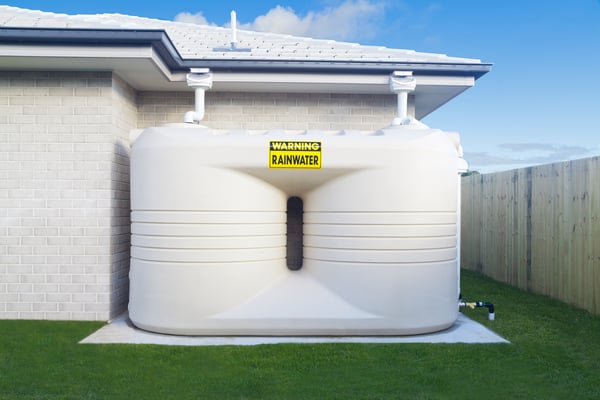11 Benefits of Rainwater Harvesting | Water Conservation

Conserving natural resources is key to ensure a sustainable future, especially with the current population growth and the threat of climate change. Water covers 70% of the Earth, but only 1% is drinkable. As a result, water conservation techniques are rising in popularity.
Rainwater harvesting can be implemented in residential and commercial buildings. It consists on collecting rainwater from a building’s roof or other surfaces, and storing it in a tank or cistern. Although rainwater is not suitable for drinking and cooking, it has applications like washing clothes, watering gardens and flushing toilets. Water savings can rise up to 40% when using rainwater on a daily basis, reducing your utility bill.
Conserve water and reduce the environmental footprint of your building.
How Does Rainwater Harvesting Work?
Rainwater is collected from roofs and other surfaces, and then filtered to eliminate contaminants such as leaves. The water is stored in tanks located in the property, and delivered by gravity or pumped.
Rainwater must travel through a dedicated pipe system because it is not suitable for drinking. A typical rainwater collection system will consist of the following elements:
- Water storage tank: Its capacity and location can vary depending on its purpose and the space available.
- Control unit: They monitor the water level in the holding tank. Some units provide additional information like water temperature and pump pressure.
- Filters: They keep debris such as leaves out of the tank. The required level of filtering depends on the application; for example, water used for washing clothes must have better quality than water used for gardening.
- Pipe system: A dedicated piping system must connect appliances like toilets, showers and washing machines.
- Pump: Transports water to where it is needed, and is necessary for systems that are buried underground. Gravity-based systems avoided it with raised storage tanks, but they are not common in domestic installations.
Consider that a building with a rainwater harvesting system will also require a backup water supply. Rainwater is not constant and unlikely to meet all your water needs. The building must still be connected to the main water supply.
Recycled Rainwater Uses

As mentioned before, rainwater is not suitable for drinking and food preparation. However, it can be used for:
- Flushing toilets
- Washing clothes
- Watering gardens
- Washing cars
- Cleaning building exteriors
Rainwater collection contributes to water use efficiency and conservation. However, to achieve greater savings, rainwater harvesting can be combined with water-saving fixtures, such as efficient toilets and washing machines. The WaterSense label from the US Environmental Protection Agency indicates that a fixture has been tested successfully.
Benefits of Rainwater Harvesting
There are plenty of benefits that come from installing a rainwater harvesting system on a commercial or residential building:
- Rainwater that falls on your property is free, and only needs a collection method.
- Reducing peaks in water demand, saving treated water for more important and appropriate uses.
- Rainwater can serve as a backup water supply in emergency situations.
- Reducing stormwater runoff from a property, mitigating the contamination of surface water.
- Rainwater harvesting systems can help meet stormwater management requirements from municipalities.
- Replacing municipal water use with rainwater reduces the amount of water that is treated and pumped. This reduces water service costs for the municipality, especially energy expenses.
- Rainwater harvesting can help meet energy standards and water efficiency ratings.
- Water bills can be reduced by replacing municipal water use with rainwater.
- Stored rainwater can be used for fire protection. Insurance companies may offer discounts for storing water on-site.
- Rainwater harvesting is a viable water source in areas where other sources are unavailable, have poor water quality, or are too expensive to develop.
- Rainwater can be transformed into potable water when it is properly filtered and disinfected. It doesn’t have many chemicals used in municipal treatment plants.
Rainwater Harvesting and Water Conservation
Rainwater harvesting provides an opportunity to conserve water in any residential or commercial property. However, collected water is not being used properly if the storage units remain full all the time. A rainwater collection system is only effective if it makes sure the water is used, delivering it with a dedicated piping system.
By getting in touch with professional plumbing engineers, you can find the best rainwater harvesting option for your property. At the same time, you can meet any local codes or requirements that apply.

Keith Fink
Keith is the Franchise Brand Manager at NY Engineers, Keith is all things related to our project portfolio, brands and all things you need to know before we start your project.
Join 15,000+ Fellow Architects and Contractors
Get expert engineering tips straight to your inbox. Subscribe to the NY Engineers Blog below.
